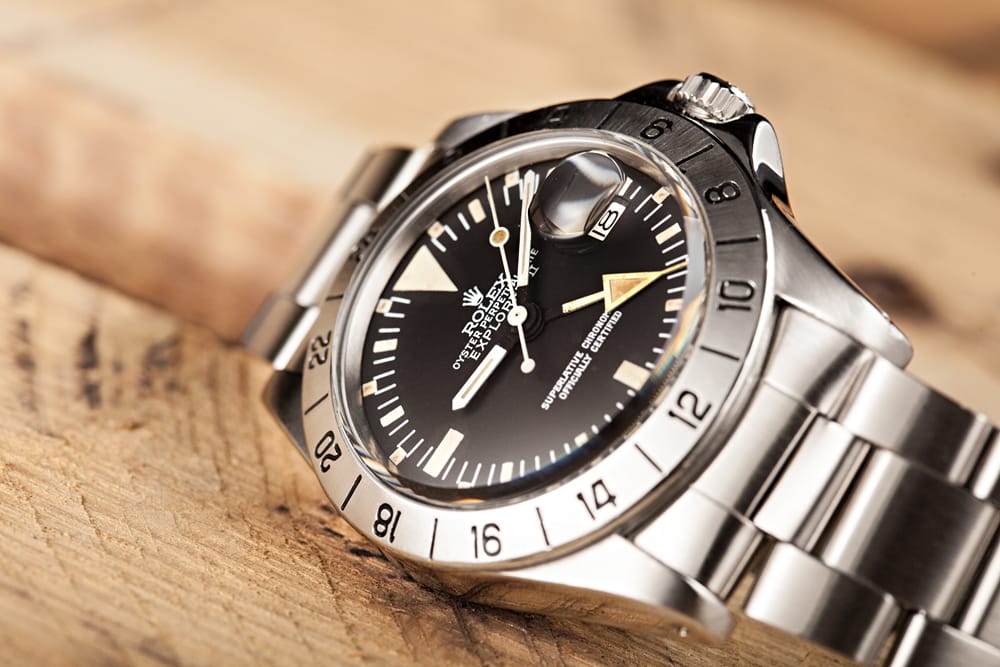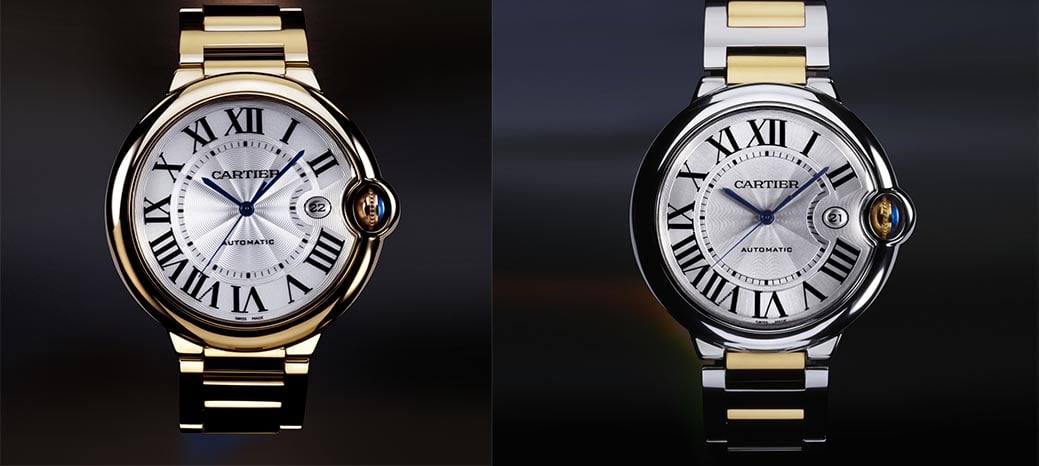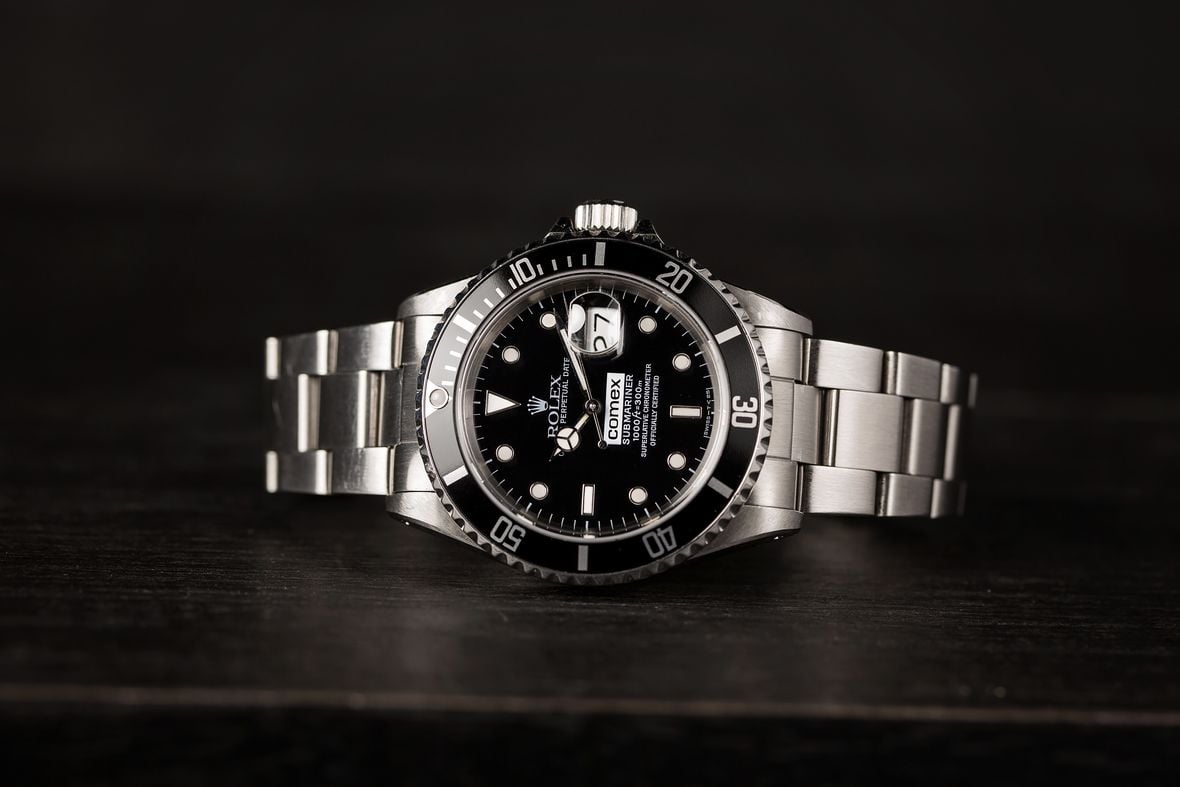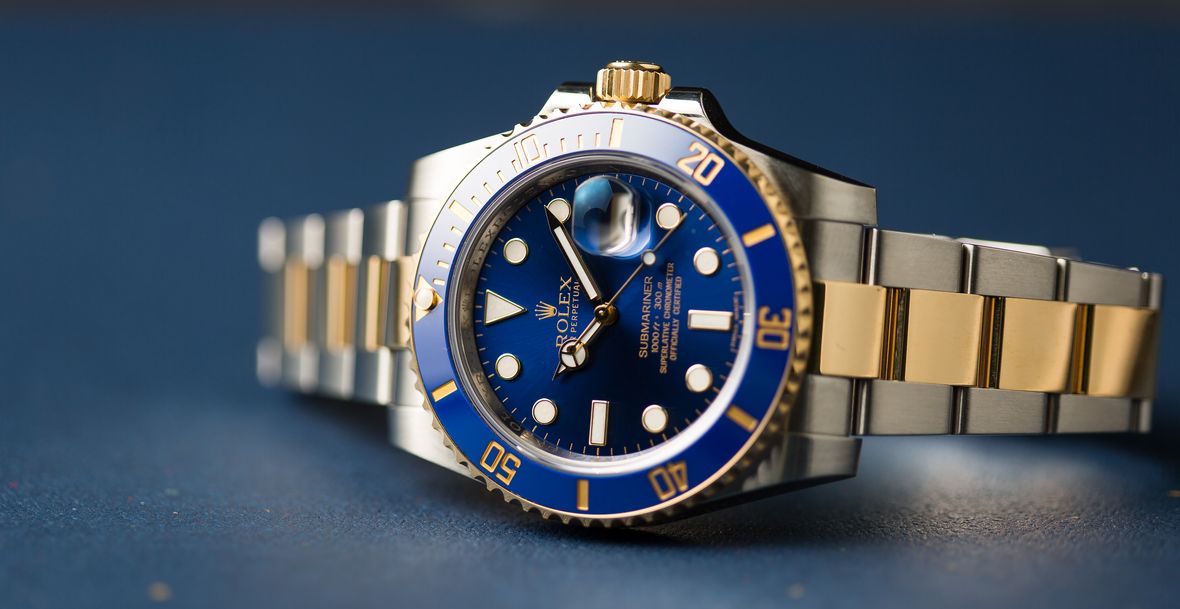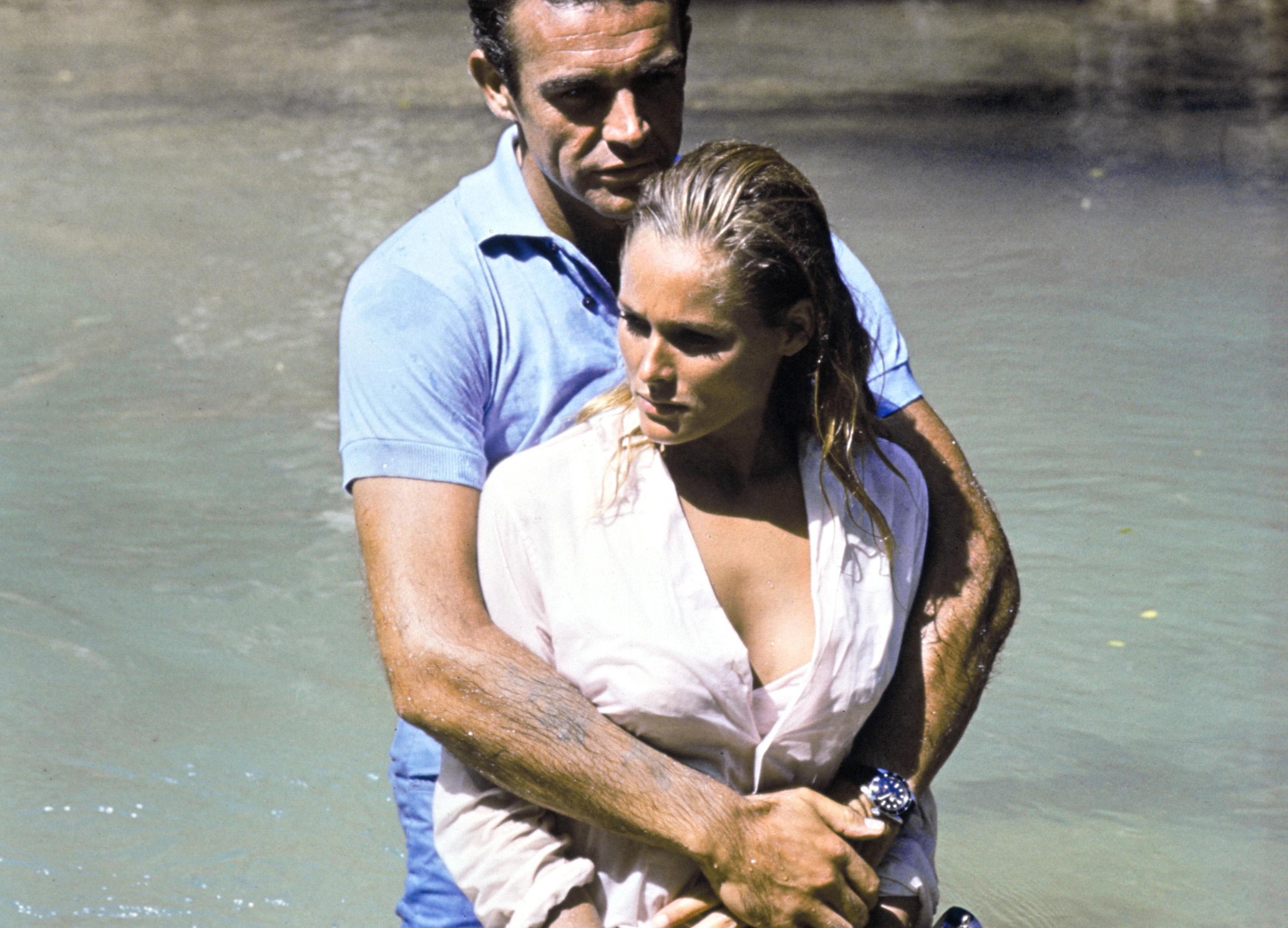The birthplaces of the current Rolex Explorer and Explorer II watches couldn’t have been more different. One was born in the high reaches of the Himalayas, in the bright light at the snow-covered top of the world. The other was born in the dank, dark, dangerous caverns deep below the surface of the Earth.
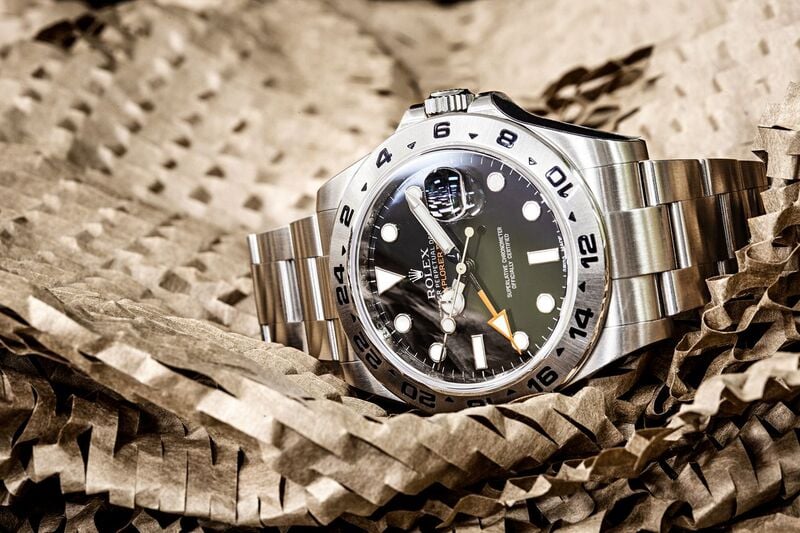
And they were as different as their birthplaces. One was small and plain, with no unique abilities beyond toughness and endurance (though he has grown). The other was big and bold, with unique attributes and abilities. And yet, the two are related. Their stories and their names are intertwined. They are not father and son, as their names would suggest.
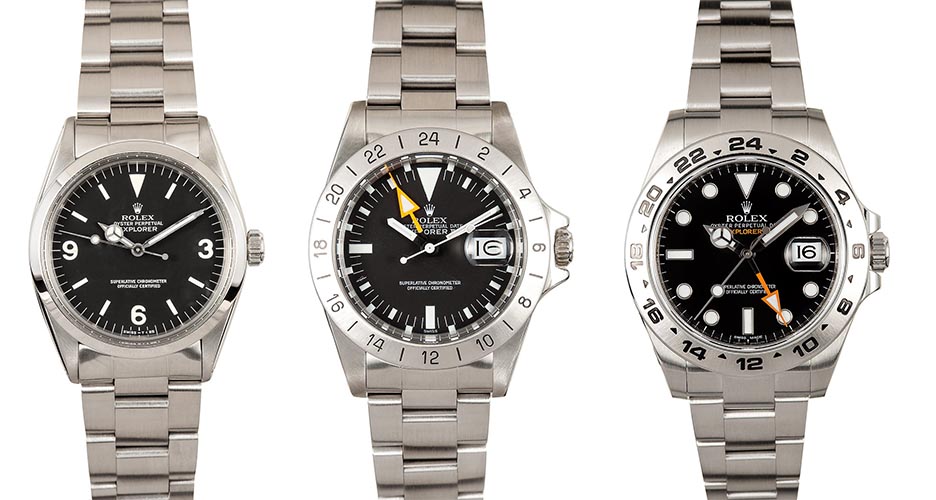
No, the Explorer and the Explorer II are Rolex’s fraternal twins.
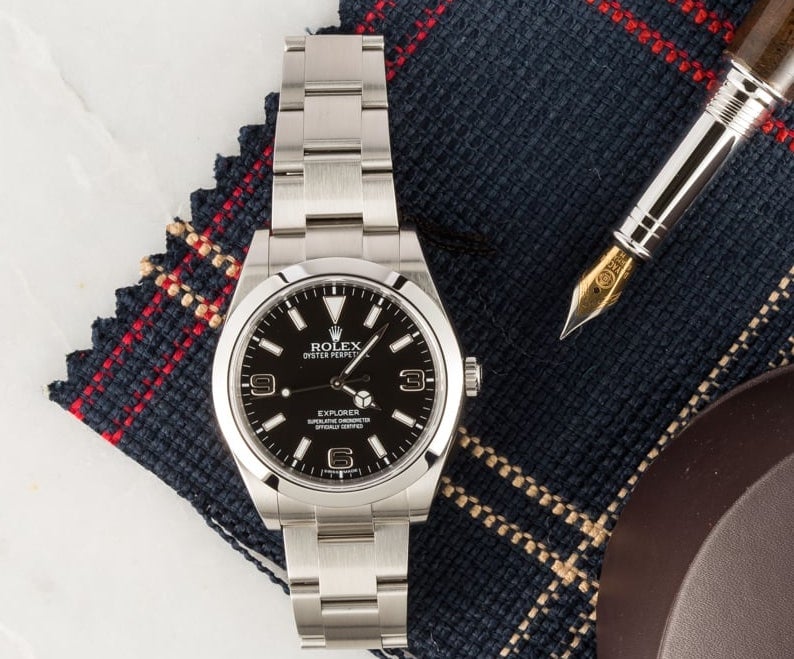
The simple, three-handed, no-date Explorer began life long before it was named. Rolex began supplying watches to expeditions in the Himalayas in the 1930s. Those watches were the forefathers to the Explorer, which made its debut shortly before it traveled to the top of Mt. Everest on the wrist of Sherpa Tenzing Norgay in 1953.
RECOMMENDED READING:
Aged to Perfection: All About Rolex “Tropical” Dials
Truly “In-House”: The Proprietary Materials of Rolex
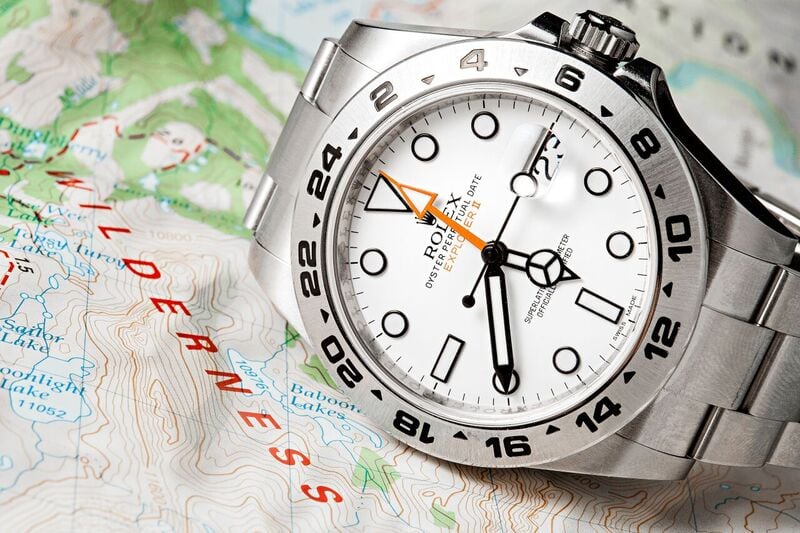
The Explorer II on the other hand, was developed for spelunkers – cave explorers. These were explorers of a different sort, made of the same ‘right stuff’ as their climbing brethren, though they didn’t have the celebrity. They explored the darkness, and needed a watch that could tell night from day when they could not. Thus the big orange hand that pointed to a second time scale, a 24 hour scale.

The Explorer II was introduced in 1971. It was basically a GMT-Master with a stationary steel bezel marked with 24 one-hour markers. Early examples (ref. 1655) were 40mm, had stick hands and a large orange 24-hour hand, and a date.
The hands evolved over time, to the familiar Mercedes set and Rolex’s classic GMT-style arrow for the 24-hour hand. The 24-hour hand was hard-wired at a ratio of 1:2 to the 12 hour hand, so it did not (could not) indicate a second time zone. That changed in 1986 however, when the Explorer II was outfitted with the calibre 3085. And the 24-hour/GMT hand reverted to the original design a few years ago.
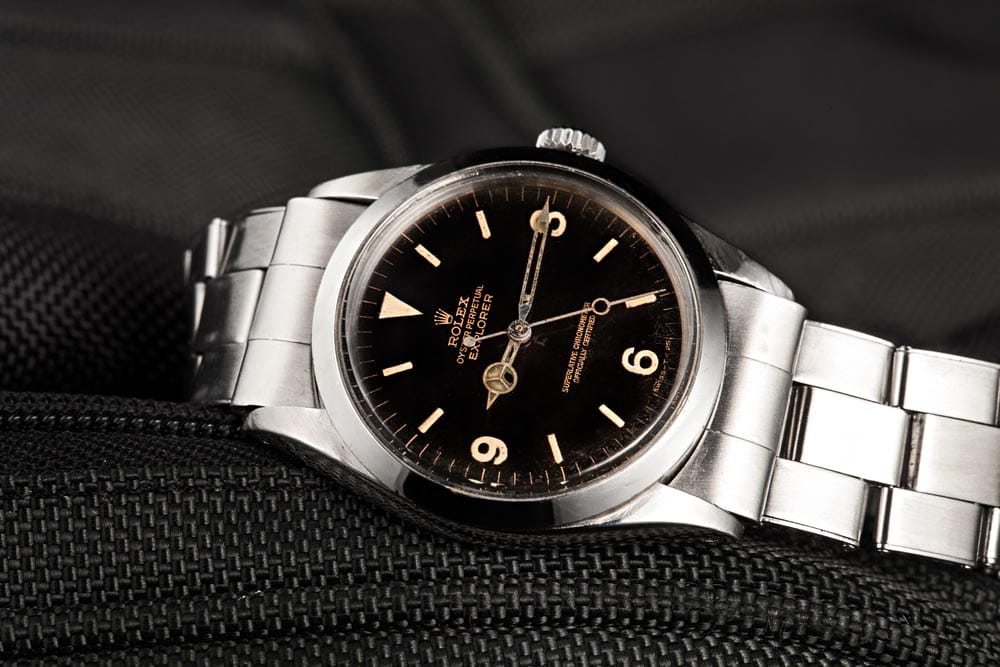
As for the Explorer, the most well-known vintage version is ref. 1016, a 36mm watch with luminous numerals painted on the dial. The 1016 followed the 6610 (which in turn, followed the original bubble-back Explorer), launching in 1963. It was followed by the 14270 in 1989. The 14270 had applied numerals, much like the watch of today. Finally this year, the applied numerals at 3, 6, and 9 were given Chromalight, Rolex’s proprietary luminescent material.
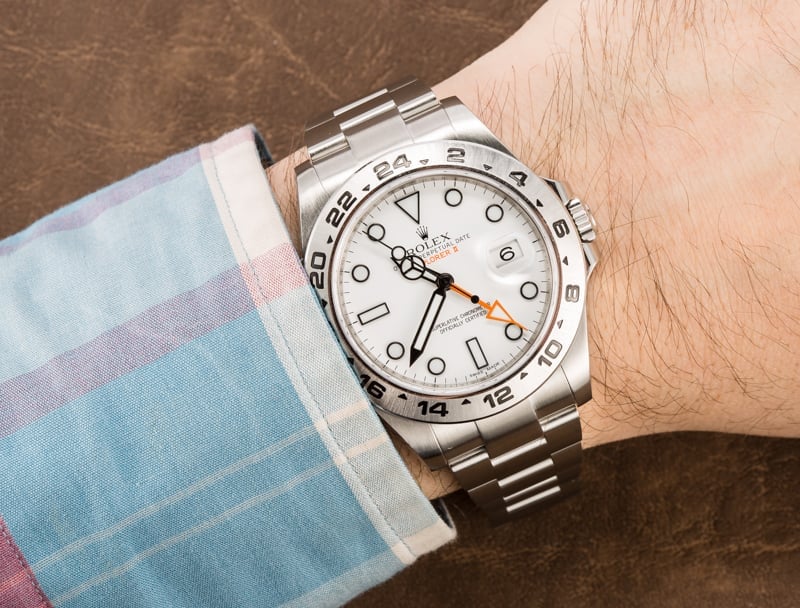
The current Rolex Explorer watch collection tips the calipers at 39mm (ref. 214270) and 42mm for the Explorer II watch collection (ref. 216570). The three-handed Explorer carries calibre 3132 while the GMT-capable Explorer II is driven by calibre 3187.
Whether you’re exploring near or far, at altitude or depth, one or the other of the fraternal Explorer twins will serve you well.
